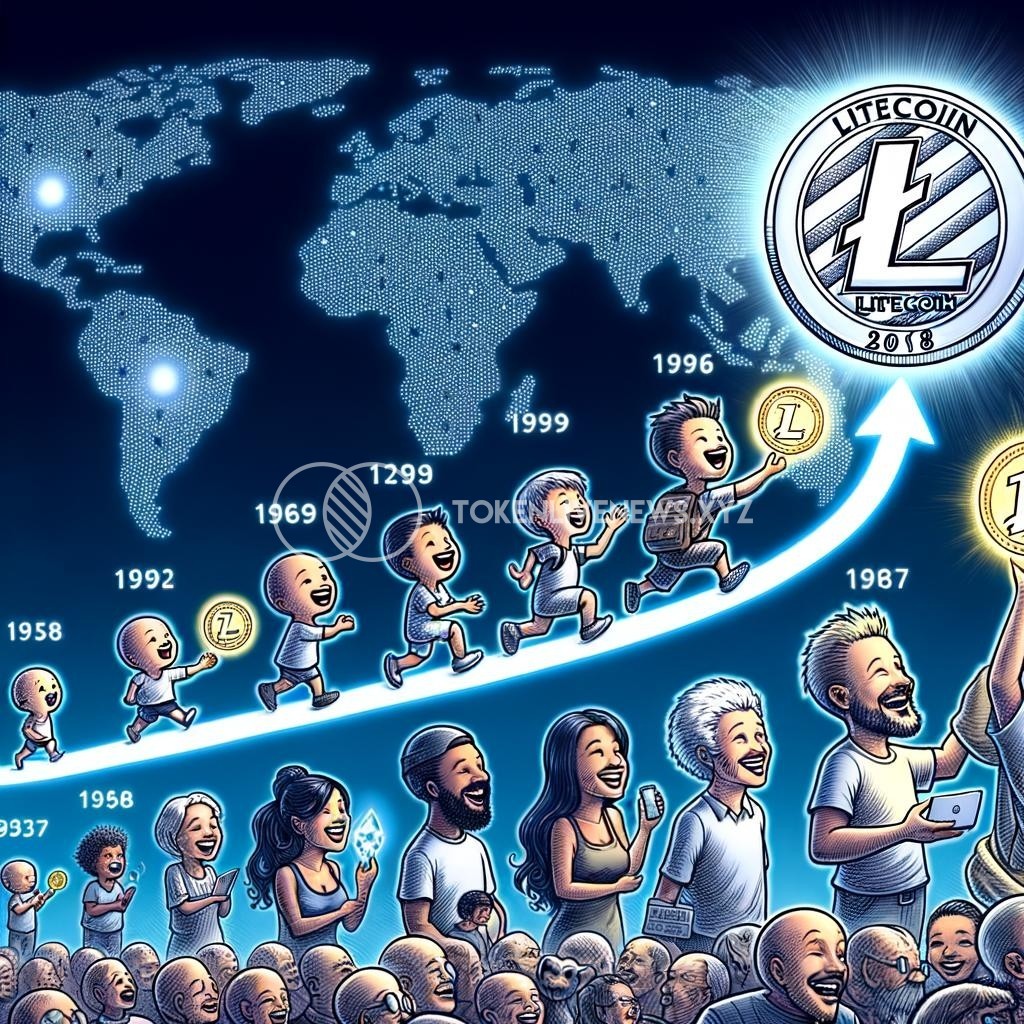Litecoin Adoption: From Early Enthusiasts to Mainstream Recognition
In the ever-evolving landscape of cryptocurrencies, there are a few digital assets that have managed to gain widespread recognition and acceptance. One such cryptocurrency is Litecoin, often referred to as the silver to Bitcoin‘s gold. Over the years, Litecoin has made significant strides in terms of adoption, starting from its early days with enthusiastic supporters and gradually making its way into the mainstream.
Litecoin, created in 2011 by Charlie Lee, has positioned itself as a faster and more scalable alternative to Bitcoin. Its primary goal was to address some of the limitations of Bitcoin, such as slower transaction speeds and high fees. With a focus on technological advancements and community-driven development, Litecoin quickly gained traction among early cryptocurrency enthusiasts.
One of the key factors that contributed to Litecoin’s initial adoption was its close association with Bitcoin. Being built on a similar codebase and sharing many underlying principles, Litecoin was seen as a logical choice for those who wanted to diversify their cryptocurrency holdings beyond Bitcoin. This early enthusiasm among crypto enthusiasts set the stage for Litecoin’s journey towards mainstream recognition.
As the cryptocurrency market grew in popularity, so did the demand for alternative cryptocurrencies like Litecoin. Its faster block generation time and lower transaction fees made it a more practical option for everyday transactions compared to Bitcoin. Merchants and service providers began accepting Litecoin as a form of payment, further fueling its adoption.
Furthermore, Litecoin’s compatibility with existing Bitcoin infrastructure played a vital role in its expansion. Many Bitcoin services and projects found it relatively easy to integrate Litecoin into their existing platforms, thereby bridging the gap between the two cryptocurrencies. This interoperability increased Litecoin’s visibility and accessibility, leading to a wider acceptance across various sectors.
In recent years, Litecoin has continued to make significant strides towards mainstream recognition. Its active development team, comprising both volunteers and industry professionals, has been instrumental in introducing new features and enhancing the overall user experience. The addition of Segregated Witness (SegWit) and the implementation of the Lightning Network have further improved the scalability and efficiency of Litecoin.
Furthermore, partnerships and collaborations with established institutions and payment processors have played a crucial role in propelling Litecoin into the mainstream arena. For instance, Litecoin has partnered with various companies to enable LitePay, a payment processing system that allows merchants to accept Litecoin seamlessly. Such initiatives have increased Litecoin’s real-world usability and positioned it as a viable alternative to traditional payment systems.
Looking ahead, Litecoin’s journey towards mainstream recognition is set to continue. The ongoing efforts to integrate the MimbleWimble privacy protocol into Litecoin’s blockchain might attract a new wave of users seeking enhanced privacy features. Additionally, the increasing acceptance of cryptocurrencies by financial institutions and regulatory bodies could lead to more widespread adoption of Litecoin as a reliable and secure digital asset.
In conclusion, Litecoin has come a long way from its early days with a handful of enthusiasts to gaining mainstream recognition as a practical and accessible cryptocurrency. Its commitment to technical improvements, interoperability with Bitcoin infrastructure, strategic partnerships, and growing acceptance by businesses have all contributed to its success. With continued advancements and growing market interest, Litecoin’s adoption trajectory seems promising, making it an intriguing digital asset for both newcomers and seasoned crypto enthusiasts alike.







